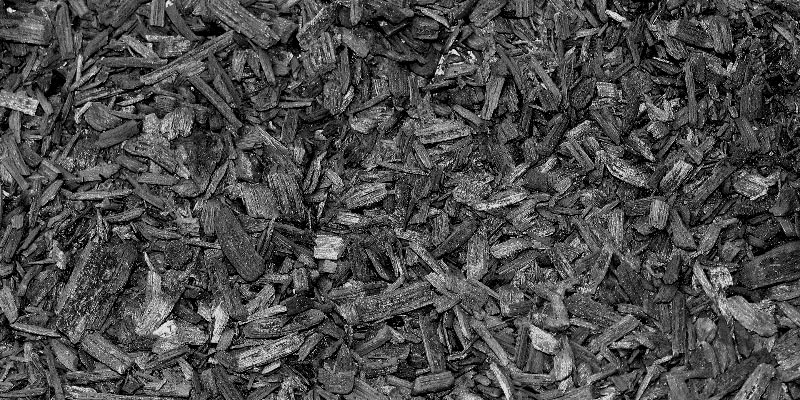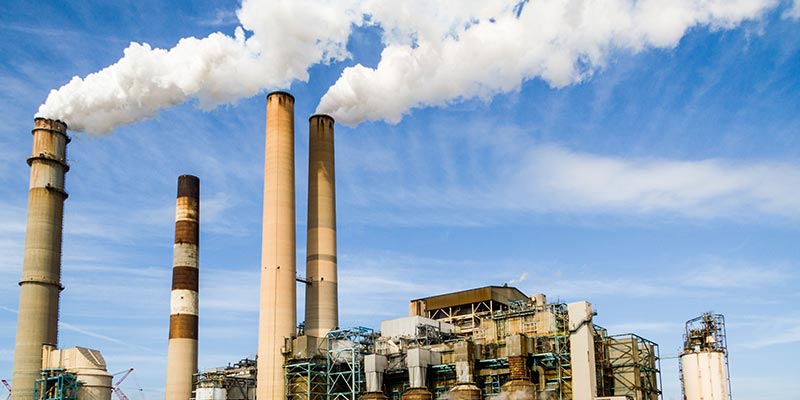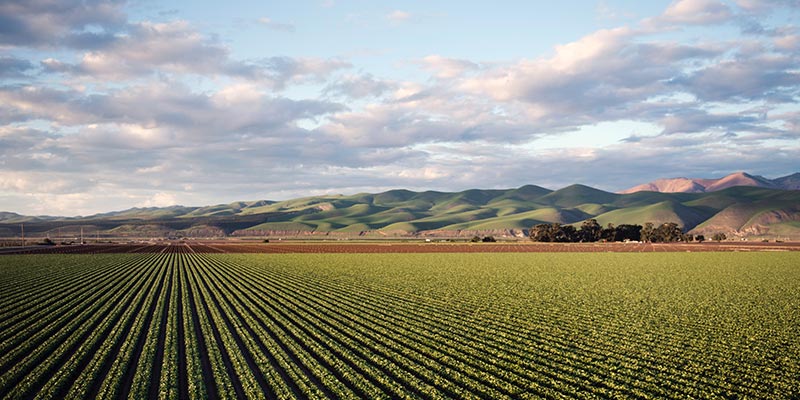CO-BURN is your source for information surrounding biochar topics in Colorado, including biochar production and usage. CO-BURN exists to provide helpful, current information to land owners and professionals working in fields such as forestry, agriculture, agronomy, horticulture, biofuels, carbon management, environmental health, and more.
What is Biochar?

Biochar is an organic soil amendment currently being researched and used in a variety of applications across Colorado and beyond. Biochar has the potential to provide benefits to multiple economic sectors integrated within its supply chain. For example, biochar and biofuel co-production can provide additional revenue streams for forestry and waste management.
Biochar applications may have a critical role in mitigating climate change, reclaiming and restoring land, and boosting soil fertility for agriculture and horticulture. This article explores some of the latest research relevant to biochar applications in Colorado such as:
- Providing a market for beetle-killed wood
- Generating biofuels as a co-product
- Storing carbon and reducing greenhouse gas emissions
- Restoring contaminated sites
- Aiding in water and nutrient cycling in agriculture
How is Biochar Produced?
Biochar is charred organic matter used deliberately as a soil amendment, with the intent to improve soil properties (1). Biochar is made by heating biomass to high temperatures (480-1800°F) in the absence of oxygen through pyrolysis (2). Pyrolysis chemically and physically alters the composition of the biomass producing a highly porous, stable form of organic matter that can be used as a soil amendment.
Biochar can be produced from a variety of feedstocks including forest residues, agricultural residues, waste, and purpose grown biomass. The source material and the pyrolysis conditions are major controls on the biochar’s pH, ash content, elemental composition and stability. Therefore, both the biochar feedstock and production conditions can have important implications on how biochar amendments influence soil properties and their efficacy for different management objectives.
Helpful Biochar Resources
Introduction to Biochar Resources
- CSU Extension Biochar Fact Sheet
- Biochar Guidelines for Agricultural Applications
- Beyond Application: Learning more about biochar
- Biochar Basics: An A-to-Z Guide to Biochar Production, Use, and Benefits
- Biochar Removes Carbon
- Frequently Asked Questions About BioChar Applied to Soil
- NRCS Biochar Funding for US Producers
- NRCS Conservation Practice Standard – Soil Carbon Amendment, Code 336 (Ac)
Biochar and Livestock
Biochar and Forests
- Beyond the basics: A perspective on barriers and opportunities for scaling up biochar production from forest slash
- Can biochar link forest restoration with commercial agriculture?
- Hazardous Fuels Reduction Using Flame Cap Biochar Kilns
Biochar Policy
- 2017 Senate Joint Resolution 17-002
- Biochar Research Act of 2023
- Study Biochar in Plugging of Oil and Gas Wells
- Recommendations to Scale Up Biochar Research and Commercialization
Colorado Biochar in the News
- “Biochar could be instrumental to a healthier Grand Valley per Citizens for Clean Air,” The Daily Sentinel (1/9/23)
- “How These Scrap Wood Startups Could Help Colorado Fight Wildfires,” CPR News (1/29/2021)
- “CSU researchers launch $1.9 million project for water treatment and reuse using biochar,” CSU Source (12/28/2021)
- “Outside the box and inside the burner: Biochar as a climate-forward solution,” USDA Forest Service (11/18/2022)
- “City secures $100,000 grant for bioenergy-biochar work,” City of Boulder (6/8/2021)
- “Biochar Sequesters Carbon, Revives Ecosystems, and Has Potential Benefits in Dozens of Industries,” Saoradh Enterprise Partners
- “Loan Program Helps Reduce Wildfire Severity While Improving Profits for Wood Products Businesses,” Colorado State Forest Service (8/30/2022)
Biochar and Forest Management

If biochar production can be accomplished in a cost effective manner, it may change how forests are managed. Specifically, trees that are killed by pests, such as mountain pine beetle, may be viewed as a productive source for manufacturing biochar, rather than a wasted resource. At this writing, Colorado’s forests suffer from overcrowding due to wildfire suppression and massive losses from recent pest outbreaks (3). Current forest management practices involve controlled burning and harvesting and burning in smaller slash piles. These practices are expensive, pose fire risks, cause smoke pollution, and can degrade the land if not properly managed.
Biochar production has potential to turn beetle-damaged stands, hazard trees and other residues from fuels reduction treatments into value-added product. Rather than being burned, the trees and residues would be harvested as a feedstock.
Preliminary results demonstrate that there may be support among Colorado residents for this type of management program. A recent study of Colorado households indicated that residents were hypothetically willing to pay roughly the same for burning slash on-site and moving it off-site for biochar production as a means of reducing the intensity of future wildfires (4).
Biochar companies in Colorado are producing woody biochar on a small-scale, experimental basis from forest stewardship contracts with the USFS and residues at pelleting operations. If woody biochar is found to be an effective soil amendment, then there will likely be an increase in demand. Biochar production would thus provide additional value by helping to lower the cost of forest management practices.
While there is promise for market development, the effectiveness of using pine-based biochar as a soil amendment needs to be better documented. Preliminary studies also indicate that long distances between the forest and the biochar processing centers should prompt a closer look at pre-processing or other means for reducing transportation costs associated with making biochar from pine beetle killed wood (5,6).
Biofuel Co-production

Biochar producers can also optimize the operating conditions to produce gas (syngas) and liquids (bio-oil) in addition to the solid biochar residues. The gas and liquid fraction can then be upgraded to produce biofuel. These systems typically apply fast pyrolysis, using moderate pyrolysis temperatures (~950°F) and shorter residence times, to optimize for bio-oil production and gasification, using higher temperatures (~1,650°F) and moderate residence times, to optimize syngas production (2).
Studies have found that biochars produced under higher temperatures tend to have more stable compounds, higher ash content and increased porosity leading to more persistent biochar with higher sorption capacity (7). In a recent industry survey the International Biochar Initiative found that 12% of respondents were pursuing syngas production as a by-product of biochar production and 7% were working towards collecting and refining bio-oils (8).
While none of the commercial biochar facilities in Colorado currently co-generate biofuels there are some companies working on scaling up such technologies. Recent biochar and bio-energy co-production studies show that co-production may reduce overall waste and carbon footprints(6). However, at this writing, biochar and bio-energy co-generation is generally not an economically viable venture unless a monetary value is assigned to carbon dioxide emissions (5,9).
Some bioenergy and biochar production has been shown to be economically feasible on a case-by-case basis (10,11). Product selling price uncertainty contributes to risk of private investment into a biofuel production facility (12).
Biochar for Carbon Sequestration and Greenhouse Gas Management

Biochar has recently gained much attention as a way to capture carbon from the atmosphere and mitigate global climate change. Plants naturally convert atmospheric CO2 into biomass which then gets recycled back to the atmosphere through respiration, burning or decomposition. In natural systems 80-90% of the carbon in biomass returns to the atmosphere after a few years to decades from decomposition in the soil. Likewise, after a natural fire, it is estimated that up to 25% of the carbon in the burned biomass is converted in more stable forms of organic matter like biochar (13). Pyrolysis of organic matter under controlled conditions can significantly increase the retention of carbon with 10 to 50% of the original biomass carbon retained depending on the conversion process (3).
A study looking at the stability of multiple types of biochar showed biochar had a mean residence time ranging from 90 to 1,600 years (14). Similarly, in a two year lab study at Colorado State University (CSU), wood-derived biochar amended to four soil types primarily remained in the soil, yet a small fraction of it (<3.2%) was consumed by the soil microbes (15). In the soils with an organic carbon content larger than 1.97%, the biochar applications lead to increased soil respiration with the biochar possibly providing a shorter-term carbon source (15). Therefore it is important to continue to study the stability of biochar using long-term field experiments to better understand the biochar’s full carbon sequestration potential.
Research shows biochar can also reduce emissions from more potent greenhouse gasses such as nitrous oxide (N2O). A recent review of 56 studies found that biochar has been shown to decrease N2O emission by 49% (16). Researchers have looked at a variety of mechanism by which biochar could reduce N2O emissions including reducing the amount of nitrogen available for transformation into N2O, altering the soil conditions most favorable to N2O production and generating conditions that more efficiently convert N2O to N2 gas.
CSU is currently conducting lab incubations and field experiments to better understand the mechanisms by which biochar impacts nitrogen cycling and decreases N2O emissions from fertilizer. This work can help inform how biochar can be applied to reduce greenhouse gas emissions and manage nitrogen cycling in soils.
Biochar in Mine Reclamation and Restoration

Certain biochars have also been shown to have high sorption capacity which could be used to immobilize contaminants in soil. Biochar with small particle sizes and high surface area have also been shown to sorb organic pollutants (7). Biochar’s high pH can also help provide a liming effect for reclamation of highly acidic soils.
A study by the USGS on two hardrock mine tailing sites, where soils are subject to metal toxicity and high acidity, found that the addition of biochar had differing effects across sites (17). At one site, biochar amendments decreased the leaching of aluminum, cadmium, copper, lead and zinc. However, at the other site, biochar addition increased the mobilization of copper and zinc. The study also found that higher application rates may be necessary to sufficiently raise pH and reduce toxicity. Therefore, biochar addition can potentially provide a low-cost alternative for reclamation of soils contaminated with heavy metals, organic pollutants or high acidity but requires careful consideration of site-specific properties beforehand.
There is considerable opportunity for mining companies or other private sector companies to earn a profit by investing into the development of biochar technologies that are specific to mine site remediation (18).
Biochar is also being explored for its potential to aid in ecological restoration of degraded soils to help build soil organic matter, facilitate plant regeneration and provide preferential habitat for soil microbes and biota. The USFS and CSU are currently collaborating on a project exploring biochar’s ability to aid in carbon sequestration, nutrient retention and revegetation of decommissioned forest roads in the Arapahoe National Forest.
In a series of qualitative research interviews conducted in 2011 with biochar purchasers and home/ garden supply stores, the majority of biochar in Colorado was sold for mine reclamation applications and experimental forest research conducted by government agencies and entrepreneurs. Pine wood chips comprised the typical feedstock, and the average order was approximately 6,400 lbs, or on the order of 25 to 30 cubic yards depending on the density of the specific biochar (18).
Biochar in Agriculture and Horticulture

Biochar has many properties that have potential to enhance soil fertility. Biochar constitutes a highly stable form of soil organic matter. Soil organic matter is important in retaining water, regulating the exchange of nutrients, and building soil structure through aggregation.
Biochar additions may have the ability to increase the water holding capacity of soils by adding additional pore space and supporting aggregation. However, studies have also looked at how biochar may increase infiltration of water through soils so there may be a tradeoff (19). Research is currently underway at CSU to explore biochar’s impact on soil moisture across different irrigation treatments. Other regions are also looking at the application of biochar to provide a liming effect in more acidic soils or help mitigate nitrate leaching in regions with higher precipitation.
Biochar can also play an important role in higher valued crop systems like orchards or gardens where the economics are more favorable. Biochar producers have worked in turfgrass management, vineyards, and are looking at opportunities in the emerging cannabis industry in Colorado. Biochar has been considered as a growth medium, a soil inoculum or an organic matter source.
With its stable structure, biochar does not always offer many nutrient inputs to the soil, although some manure-based biochars have been shown to add nitrogen to soil. However, biochar’s sorption properties can play a key role in retaining nutrients (20). Many producers offer biochar blends mixed with other organic fertilizers to deliver a slower release of nutrient over time.
The Future of Biochar in Colorado
A small commercial biochar market has developed in Colorado and biochar is being applied to meet a diverse range of management objectives.
Biochar literature is rapidly expanding and many studies have shown the effects of various biochar treatments. We must continue this research to examine the mechanisms controlling these effects which will allow us to better inform management practices. Biochar’s impacts on soils are not universal and must be tailored to suit the given management goals. As the research and applications continue to develop, scientists, entrepreneurs and land managers will all play a critical role in determining the opportunities for biochar in Colorado.
Should you have the inclination, you could experiment with biochar in your own garden to assess the performance in Colorado soils. The section below contains information for finding biochar producers. Look for more information on biochar as it becomes available from research projects across the state.
Want More Information?
Colorado State University Office of Engagement & Extension:
Derek Lowstuter
Agriculture & Food Systems Specialist
Derek.Lowstuter@colostate.edu
Colorado State Forest Service:
Tim Reader
Wood Utilization & Marketing Program Specialist
Tim.Reader@colostate.edu
Commercial Biochar Sales:
References
1) Lehmann, J., Joseph, S. (2009). Biochar for Environmental Management. Earthscan, Sterling, VA.
2) Huber, G.W., Iborra, S., Corman, A. (2006). Synthesis of transportation fuels from biomass; chemistry, catalysts, and engineering. Chem. Rev., 106, 4044-4098.
3) Schoennagel, T., Veblen, T.T., Romme, W.H. (2004). The Interaction of Fire, Fuels and Climate across Rocky Mountain Forests. BioScience, 54(7), 661-676.
4) Tabatabaei, M., Loomis, J.B., Mccollum. D.W. (2015). Non-market benefits of reducing environmental effects of potential wildfires in beetle-killed trees: a contingent valuation study.” Journal of Sustainable Forestry, 34(8), 720-737.
5) Field, J., Keske, C.M.H., Lohman Birch, G., DeFoort, M., Cotrufo, M.F. (2013). Distributed bioenergy and biochar co-production: A regionally-specific case study of environmental benefits and economic impacts. Glob. Change Bio. Bioenergy Special Edition on Bioenergy, 5, 177-191.
6) Huggins, T., Wang, H., Kearns, J., Jenkins, P., Ren, Z.J., (2014). Biochar as a sustainable electrode material for electricity production in microbial fuel cells. Bioresource Technol., 157, 114–119.
7) Xie, T., Reddy, K.R., Wang, C., Yargicoglu, E., Spokas, K. (2015) Characteristics and applications of biochar for environmental remediation: A review. Environ. Sci. Technol., 45(9), 939-969
8) Jirka, S., Tomlinson, T., (2015) State of the biochar industry 2014: A survey of commercial activity in the biochar sector. International Biochar Initiative.
9) Galinato, S.P., Yoder, J.K., Granatstein, D. (2011). The economic value of biochar in crop production and carbon sequestration. Energy Policy, 39, 6344–6350.
10) Meyer, S., Glaser, B., Quicker, P. (2011). Technical, Economical, and Climate-Related Aspects of Biochar Production Technologies: A Literature Review. Environ. Sci. Technol., 45(22), 9473-9483.
11) Sparrevik, M., Lindhjem, H., Andria, V., Fet, A.M., Cornelissen, G. (2014). Environmental and socioeconomic impacts of utilizing waste for biochar in rural areas in Indonesia—A systems perspective. Environ. Sci. Technol., 48, 4664−4671.
12) Petter, R., Tyner, W.E. (2014). Technoeconomic and policy analysis for corn stover biofuels. ISRN Economics, Volume 2014, Article ID 515898. Hindawi Publishing Corporation.
13) Santín, C., Doerr, S.H., Kane, E.S., Masiello, C.A., Ohlson, M., De La Rosa, J.M., Preston, C.M., Dittmar, T. (2015). Towards a global assessment of pyrogenic carbon from vegetation fires. Glob. Change Bio., 12985.
14) Singh, B.P., Cowie, A.L., Smernik, R.J. (2012). Biochar carbon stability in a clayey soil as a function of feedstock and pyrolysis temperature. Environ. Sci. Technol., 46, 11,770-11,778
15) Stewart, C.E., Zheng, J., Botte, J., Cotrufo, M.F. (2013). Co-generated fast pyrolysis biochar mitigates greenhouse gas emissions and increases carbon sequestration in temperate soils. Glob. Change Bio. Bioenergy, 5, 153-164.
16) Cayuela, M.L., Jeffery, S., Van Zwieten, L., 2015. The molar H:Corg ratio of biochar is a key factor in mitigation N2O emissions from soil. Agric., Ecosyst. Environ., 202, 135-138.
17) Kelly, C.N., Peltz, C.D., Stanton, M., Rutherford, D.W., Rostad, C.E. (2014). Biochar application to hardrock mine tailings: Soil quality, microbial activity, and toxic element sorption. Appl. Geochem., 43, 35-48.
18) Keske, C.M.H., Lohman, G. (2012). Biochar: An emerging market solution for legacy mine reclamation and the environment. Appalachian Natural Resources Law Journal, 6(1), 1-14.
19) Barnes, R.T., Gallagher, M.E., Masiello, C.A., Liu, Z., Dugan, B. (2014). Biochar-induced changes in soil hydraulic conductivity and dissolved nutrient fluxes constrained by laboratory experiments. PLoS ONE, 9(9), 1-9.
20) Clough, T.J., Condron, L.M., Kammann, C., Müller, C. (2013). A review of biochar and soil nitrogen dynamics. Agronomy, 3, 275-293.






